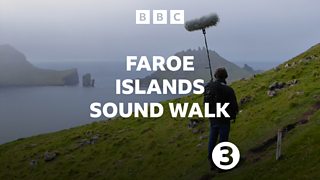The "hidden folk" of the Faroe Islands – and other fascinating traditions
This December on ´óÏó´«Ã½ Radio 3, join travel writer Horatio Clare as he journeys through the Faroe Islands, a remote archipelago in the Atlantic Ocean north-west of Scotland. This evocative slow radio journey weaves together the natural sounds of the Faroese landscape and beautiful music, with Horatio our guide. Over the course of three episodes, we glimpse the unique character of the Faroes – including three folk tales and traditions that still have relevance today.
-
![]()
Listen on Radio 3 and ´óÏó´«Ã½ Sounds
´óÏó´«Ã½ Radio 3 at 4pm on 25, 26 and 27 December. Listen on ´óÏó´«Ã½ Sounds until January.

1. The hidden folk
In episode one of Faroe Islands Sound Walk, we journey through the dramatic landscape of the north-eastern island of Borðoy, where jagged, windswept mountains tumble down into the sea and mist blurs the boundaries between air and water. “You could almost turn the whole thing upside down,” Horatio says, “and have us walking through the other world.”
It was in researching that “other world” that he came across a curious paragraph from anthropologist Jonathan Wylie that stopped him in his tracks. “It was the last thing you'd expect from an anthropologist from a prestigious university,” he says.
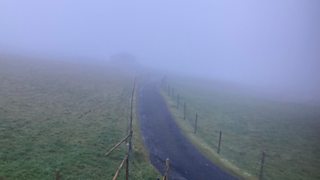
I've never seen one myself, but several of my Faroese friends believe they have, and more to the point, their existence was not questioned until quite recently. Huldufólk (hidden folk), elves, thus are – or were – established features of the Faroes.
- Jonathan Wylie, The Faroe Islands: Interpretations of History
Forget everything you’ve read in Tolkien about willowy figures sporting silvery robes and pointy ears. Faroese elves are the same height as humans. They wear grey and their hair is black. They live similar lives to those of the islanders, but their domain starts where that of humans ends. They live in and around rocks and mounds and can choose whether or not they are seen by humans.
According to Faroese and Icelandic folklore, the huldufólk are assiduous about keeping promises. If you meet one of them at a crossroads, or at a wedding (two places they are likely to appear), you must take care to resist their trickery and temptations. You must never put yourself under any obligation to them. To owe a debt to the elves is extremely dangerous.
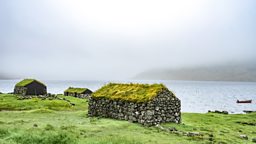
Documented sightings of the huldufólk started to appear in the 13th century and peaked in the years following the Reformation, a period when the Faroe Islands were largely cut off from Danish society and the wider world. In the late 17th century, the Danish priest Luca Debes collected several elaborate accounts of huldufólk encounters. But, as the Faroe Islands opened up to the world, the elves seemed to melt away, back into the shadows. Still, you’d be hard-pressed to find a Faroese who would deny that they exist.
It’s well-known that the huldufólk dislike daylight and Christianity. Some Faroese believe that the elves disappeared from the islands in the 1950s, when electricity came to the islands.
2. Life on the water
It’s said that you’re never more than five kilometres from the sea in the Faroe Islands, so it’s little surprise that fishing makes up a huge part of the economy, constituting 95% of exports and half of the Faroese GDP. And, though a controversial topic in today’s society, grindadráp (pilot whaling) is nevertheless a big part of the Faroese national identity.
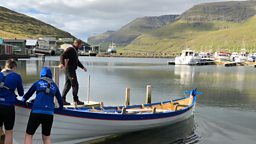
The Faroese rowing tradition, meanwhile, makes that of Oxbridge look tame by comparison. In episode two, we join Horatio as he heads out on to the water with the current Faroese junior rowing champions – an under-14s team from the small town of Sorvágur in Vágar on the western side of the archipelago.
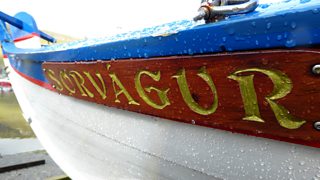
Traditional Faroese six- and eight-oar wooden boats have contributed to the livelihood of the islands for centuries, transporting islanders both out to the fishing grounds and between settlements. Horatio introduces us to the indomitable Victorian travel writer, Elizabeth Taylor, who described the Faroese definitions of “six-man weather” and “eight-man weather”. Six-man weather meant that passengers could survive the trip with six rowers. One would only venture on to the water in eight-man weather if lives were at risk.
Today, the islands are connected by bridges, ferries and undersea tunnels, and rowing has become the Faroe Islands’ national sport. Everybody comes out to cheer on their team at the annual Kappróður (boat race), which takes place in stages around the islands in June and July. Some rowers still wear traditional Skipstroyggjan, the distinctive, patterned woollen jumpers that both protect their wearers from the elements and signal to those waiting on the shore that their loved ones are still alive.
3. Chain dancing
In episode three, on the southernmost island of Suðuroy, Horatio reaches sea level and a brief respite from the dense mountain fog at Sumba, a village known for its tradition of Faroese chain dancing. The Føroyskur dansur (Faroese chain dance) is a medieval form that survived and flourished in the remote Faroe Islands at a time when other European countries banned it over its pagan origins.
It is danced today as it has been for hundreds of years. Participants gather in the village hall, crossing their hands to join with those of partners on each side, forming a large ring. Everyone moves together to the music, circles within circles all taking two steps to the left and one step back. The effect in a hall full of dancers is mesmerising: Horatio likens it to a natural phenomenon: “like fish in a bubble net… or swallows in a cloud”.
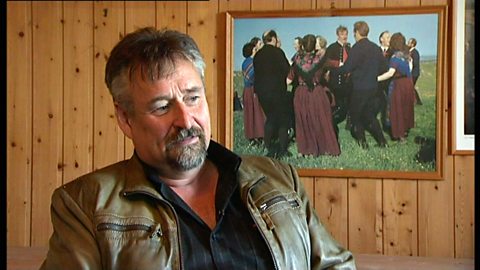
Dannsa na sèine – chan eil e ri fhaicinn ann an à ite sam bith ach anns na h-Eileanan Fà rothach
The Chain Dance – the only place it can still be seen is in the Faroe Islands
Chain dancing remains a core activity of the Faroese community, bringing communities together and celebrating Faroese culture. In the past, it also provided the setting for courtship rituals that necessarily had to be conducted just under the surface of public life. Horatio’s heroine, the travel writer Elizabeth Taylor, wrote an account of chain dancing entitled “A strange way to get a spouse”.
If you've been courting a Faroe girl for some time and wish to get her yes or no, you will have to line up alongside her in the dance and make your proposal then. If your purpose is detected, people will point at you, sing ditties and sarcastic little flings at you. If the ditty making sport of you reaches the ears of your intended, she moves away. The shrewd man retreats; he can try again. The obstinate man may be sure of her refusal, for no Faroese girl will take a man who is too clumsy to get her hand without people noticing it.
Absolutely nothing is said between them. His only chance is to get hold of her hand. A slight pressure from her means he is accepted… A refusal is even more prompt. The young man having secured the girl's hand, she quickly snatches it away from him and turns her back on him. There he stands, then the target for a shower of sarcastic speeches, the blushing, ashamed victim of a cold shoulder.
- Elizabeth Taylor, The Far Islands and Other Cold Places
